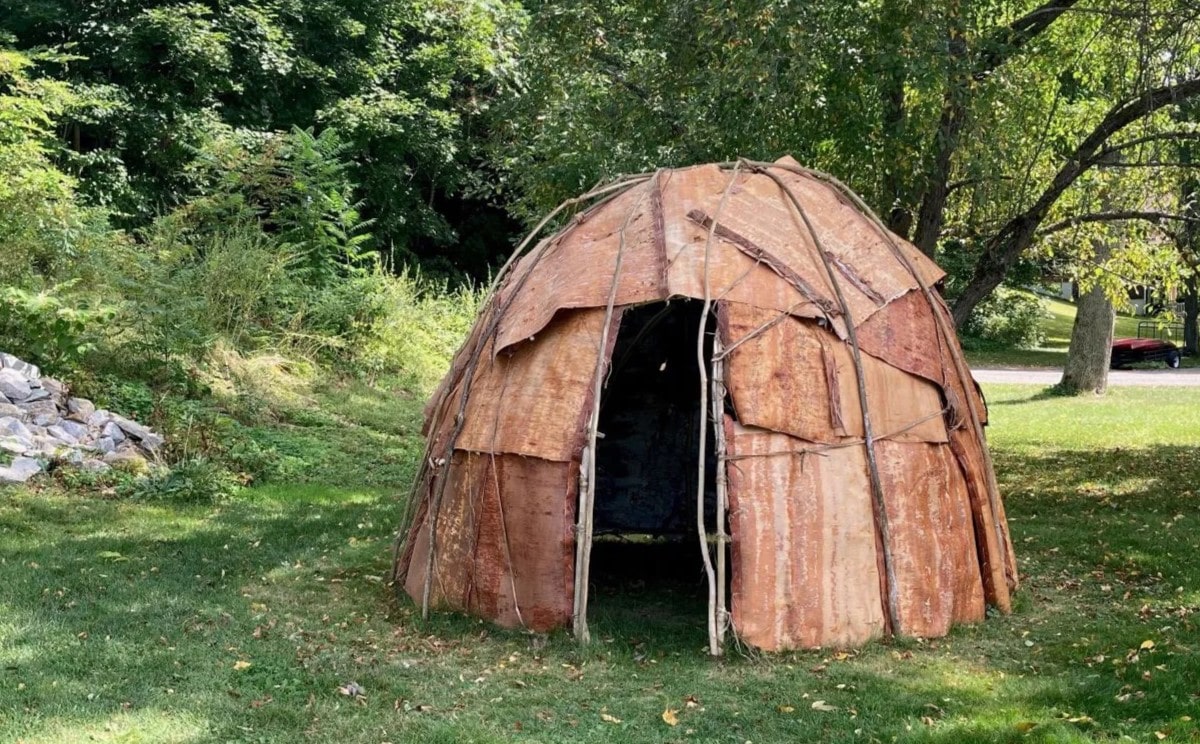
Ever wondered what makes a wigwam unique? These fascinating structures, often associated with Native American culture, have a rich history and practical design. Unlike the more well-known teepee, wigwams are dome-shaped and built to last longer. They were typically constructed using a framework of wooden poles covered with bark, mats, or hides. Why were wigwams so popular? Their design provided excellent insulation against harsh weather, making them ideal for various climates. Plus, they were relatively easy to build and dismantle, which was perfect for semi-nomadic tribes. Ready to learn more? Let's dive into 28 great facts about wigwams that will surprise and educate you!
Key Takeaways:
- Wigwams were dome-shaped dwellings used by Native American tribes in the northeastern US. They were versatile, serving as homes, shelters, and ceremonial spaces, and were built with natural materials like wooden poles and bark.
- Wigwams hold cultural significance and continue to be valued in modern times. They are used for cultural preservation, educational exhibits, and reenactments, and have influenced modern architecture with their eco-friendly design.
What is a Wigwam?
A wigwam is a type of dwelling used by Native American tribes, primarily in the northeastern United States. These structures are known for their dome-shaped design and were typically used as homes or shelters.
- Wigwams are also called "wickiups" in some regions.
- They are made from a framework of wooden poles covered with bark, mats, or hides.
- The word "wigwam" comes from the Algonquian language, meaning "dwelling."
- Wigwams were often used by tribes such as the Algonquin, Ojibwe, and Wampanoag.
Construction of Wigwams
Building a wigwam required skill and knowledge of natural materials. The process was labor-intensive but resulted in a sturdy and weather-resistant structure.
- The wooden poles used in wigwam construction were typically made from young saplings.
- Bark from trees like birch, elm, or chestnut was commonly used as a covering.
- The framework was often lashed together with strips of bark or animal sinew.
- Mats made from woven reeds or grasses could also be used to cover the structure.
Uses of Wigwams
Wigwams were versatile and served various purposes within Native American communities. They were more than just homes; they were integral to daily life.
- Wigwams were used as family homes, providing shelter for several people.
- They could also serve as temporary shelters during hunting or fishing trips.
- Some wigwams were used for ceremonial purposes or as meeting places.
- The design allowed for easy disassembly and relocation, making them ideal for nomadic lifestyles.
Differences Between Wigwams and Other Native American Dwellings
While wigwams were common in the northeastern United States, other types of dwellings were used by different tribes across North America.
- Tipis, used by Plains tribes, are conical and made from animal hides.
- Longhouses, used by the Iroquois, are elongated structures that housed multiple families.
- Hogan, used by the Navajo, are round and made from logs and mud.
- Each type of dwelling was suited to the environment and lifestyle of the tribe that used it.
Cultural Significance of Wigwams
Wigwams hold a special place in Native American culture and history. They are symbols of ingenuity and adaptation.
- The construction of a wigwam was often a communal effort, involving multiple members of the tribe.
- Wigwams were decorated with symbols and patterns that held cultural significance.
- They were often passed down through generations, maintaining a connection to ancestral heritage.
- The design of wigwams influenced modern architecture, inspiring eco-friendly and sustainable building practices.
Modern-Day Wigwams
While traditional wigwams are less common today, they still hold cultural and educational value.
- Some Native American communities continue to build wigwams for cultural preservation.
- Wigwams are often featured in museums and cultural centers as educational exhibits.
- They are used in reenactments and cultural demonstrations to teach about Native American history.
- Modern materials like canvas or synthetic fabrics are sometimes used in contemporary wigwam construction.
Fun Facts About Wigwams
Wigwams are fascinating structures with many interesting aspects that might surprise you.
- A well-built wigwam could last for several years with proper maintenance.
- The interior of a wigwam was often lined with furs or blankets for insulation.
- Some wigwams had smoke holes at the top to allow for ventilation when cooking inside.
- The size of a wigwam could vary, with some large enough to accommodate up to 20 people.
Wigwams: A Glimpse into Indigenous Ingenuity
Wigwams showcase the resourcefulness and creativity of Indigenous peoples. These structures, made from natural materials like wood, bark, and reeds, provided shelter and comfort in various climates. Wigwams were not just homes but also cultural symbols, reflecting the traditions and lifestyles of the communities that built them.
Understanding wigwams helps us appreciate the deep connection Indigenous peoples have with nature. Their sustainable building practices offer valuable lessons for modern architecture. By studying wigwams, we gain insight into a way of life that harmonizes with the environment.
Next time you see a wigwam or read about one, remember the ingenuity and cultural significance behind these remarkable structures. They remind us of the importance of preserving and respecting Indigenous heritage. Wigwams are more than just shelters; they are a testament to human adaptability and respect for nature.
Frequently Asked Questions
Was this page helpful?
Our commitment to delivering trustworthy and engaging content is at the heart of what we do. Each fact on our site is contributed by real users like you, bringing a wealth of diverse insights and information. To ensure the highest standards of accuracy and reliability, our dedicated editors meticulously review each submission. This process guarantees that the facts we share are not only fascinating but also credible. Trust in our commitment to quality and authenticity as you explore and learn with us.
